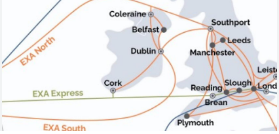On 29 July 2025, the UN Economic and Social Council (ECOSOC) adopted a resolution titled ‘Assessment of the progress made in the implementation of and follow-up to the outcomes of the World Summit on the Information Society‘.
Prepared by the Commission on Science and Technology for Development (CSTD) and adopted as a draft at the Commission’s 28th meeting in April 2025, the resolution outlines several vital recommendations for possible outcomes of the ongoing process dedicated to the review of 20 years of implementation of outcomes of the World Summit on the Information Society (the so-called WSIS+20 review process):
- A recommendation is that, as an outcome of the WSIS+20 process, commitments outlined in the Global Digital Compact (GDC) are integrated into the work of WSIS action lines by the action lines facilitators (para 131).
- A recommendation regarding strengthening the UN Group on the Information Society (UNGIS), by including further UN offices with responsibilities in matters of digital cooperation, as well as multistakeholder advice on its work, as appropriate (para 132).
- A recommendation that UNGIS is tasked with developing a joint implementation roadmap, to be presented to CSTD’s 29th session, to integrate GDC commitments into the WSIS architecture, ensuring a unified approach to digital cooperation that avoids duplication and maximises resource efficiency (para 133).
- A call for strengthening the CSTD in its role as an intergovernmental platform for discussions on the impact and opportunities of technologies to achieve sustainable development goals (para 134).
The resolution also emphasises the role of CSTD in the GDC’s follow-up and review process and the need to ensure the strongest possible convergences between the implementation of WSIS outcomes and the Compact to avoid duplication and enhance synergies, efficiencies, and impact (para 135).
ECOSOC adopted the resolution without discussion and by consensus. When discussed at CSTD in April, the draft resolution was adopted by a vote of 33 in favour and one against; the USA, which voted against, explained its vote.
Would you like to learn more about AI, tech and digital diplomacy? If so, ask our Diplo chatbot!






